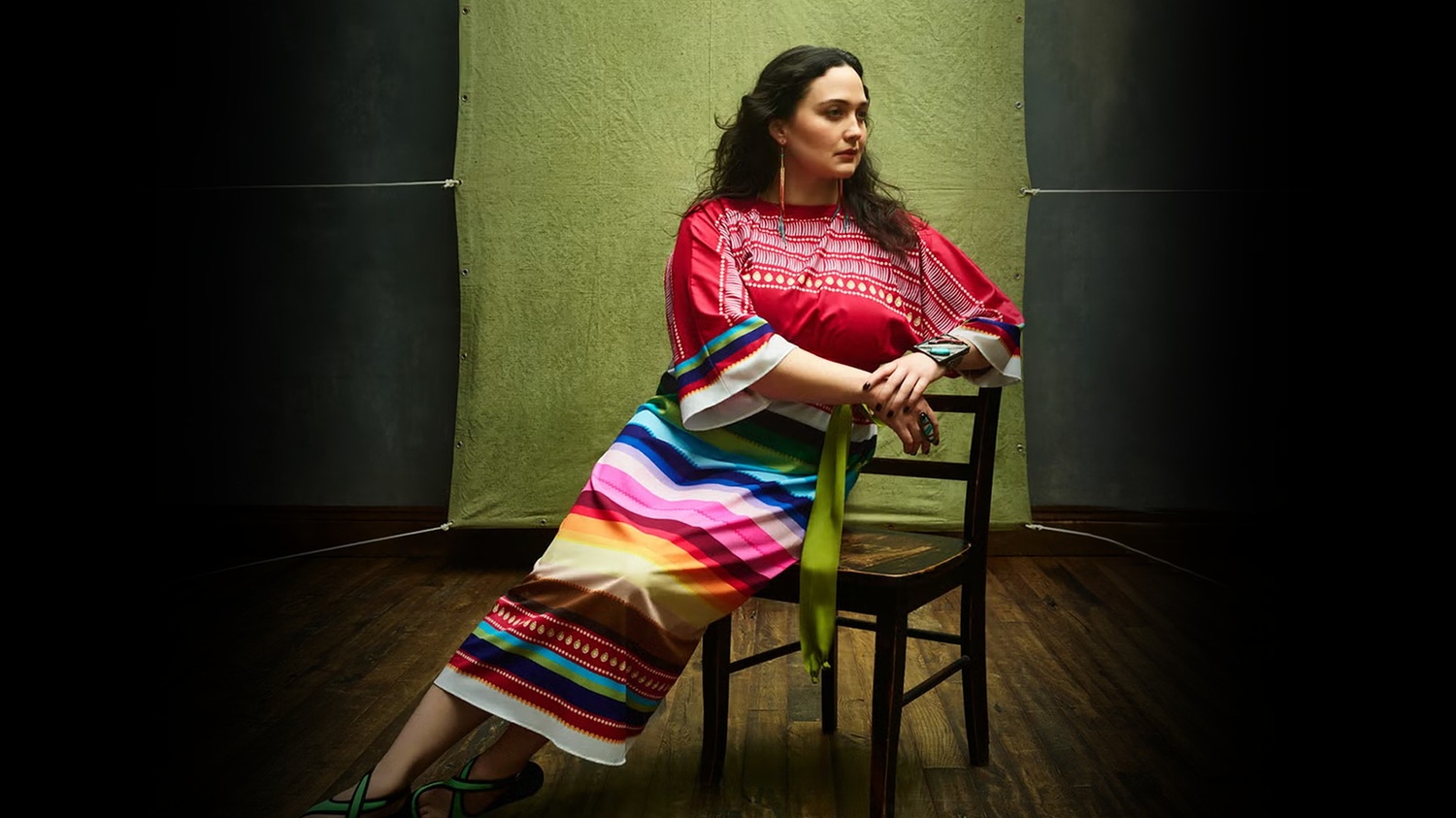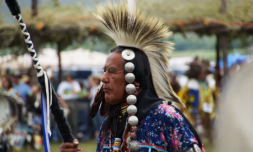Actor Lily Gladstone has called out Valentino, the latest brand to copy Indigenous designers. Protecting these cultural crafts from the capitalist machine is a longstanding – and often exhausting – battle.
By now, it’s a familiar cycle: a fashion house unveils its latest collection, the press fawns, social media unearths its problematic roots, and the brand issues a half-hearted statement about inspiration versus appropriation.
This week, it was Valentino’s turn under the microscope, courtesy of Lily Gladstone, the actor whose breakout performance in Killers of the Flower Moon brought nuanced portrayals of Indigenous experience to the forefront.
Gladstone called out the luxury label on social media for allegedly copying beadwork designs tied to Métis and Dene traditions in its pre-fall 2025 collection.
Bags from the collection feature motifs apparently ‘inspired’ by indigenous craftsmanship, an ode that veers suspiciously close to replication – void of both attribution and cultural significance.
This is hardly the first time Valentino has forayed into cultural ‘borrowing’, nor is it the first time Indigenous communities have had to fend off the predatory tendencies of high fashion.
The industry’s long history of co-opting traditional designs is less a bug than a feature, and is widely considered one of its core business strategies.
But the real issue with instances of cultural appropriation like Valentino’s new bags is that they represent more than ‘copying’. Stealing the designs, aesthetics, and craft of cultural groups is an act of erasure. Taking these traditional practices also means taking the symbols and techniques they are rooted in, which themselves carry entire histories.
For most consumers, the first time they encounter a garment that looks like a Mexican huipil, a Romanian ia blouse, or a Colombian mochila bag, it’s likely through a commercialized, diluted version sold as a ‘global statement piece.’
View this post on Instagram
The cultural weight, the meaning embedded in those patterns and stitches, is flattened into something digestible for Western tastes.
Gladstone’s criticism of Valentino speaks to the broader issue of fashion’s colonial hangover. European and American brands have long treated the cultural expressions of Indigenous communities as raw material to be mined, rebranded, and monetized.
These designs are rarely just ‘inspiration’, they’re the result of generations of painstaking craftsmanship, spiritual meaning, and community knowledge. In contrast, what emerges on the runway is just a hollow imitation.
In 2018, Carolina Herrera faced similar backlash following the launch of their resort collection, which featured garments strongly resembling traditional designs from Mexico.


















